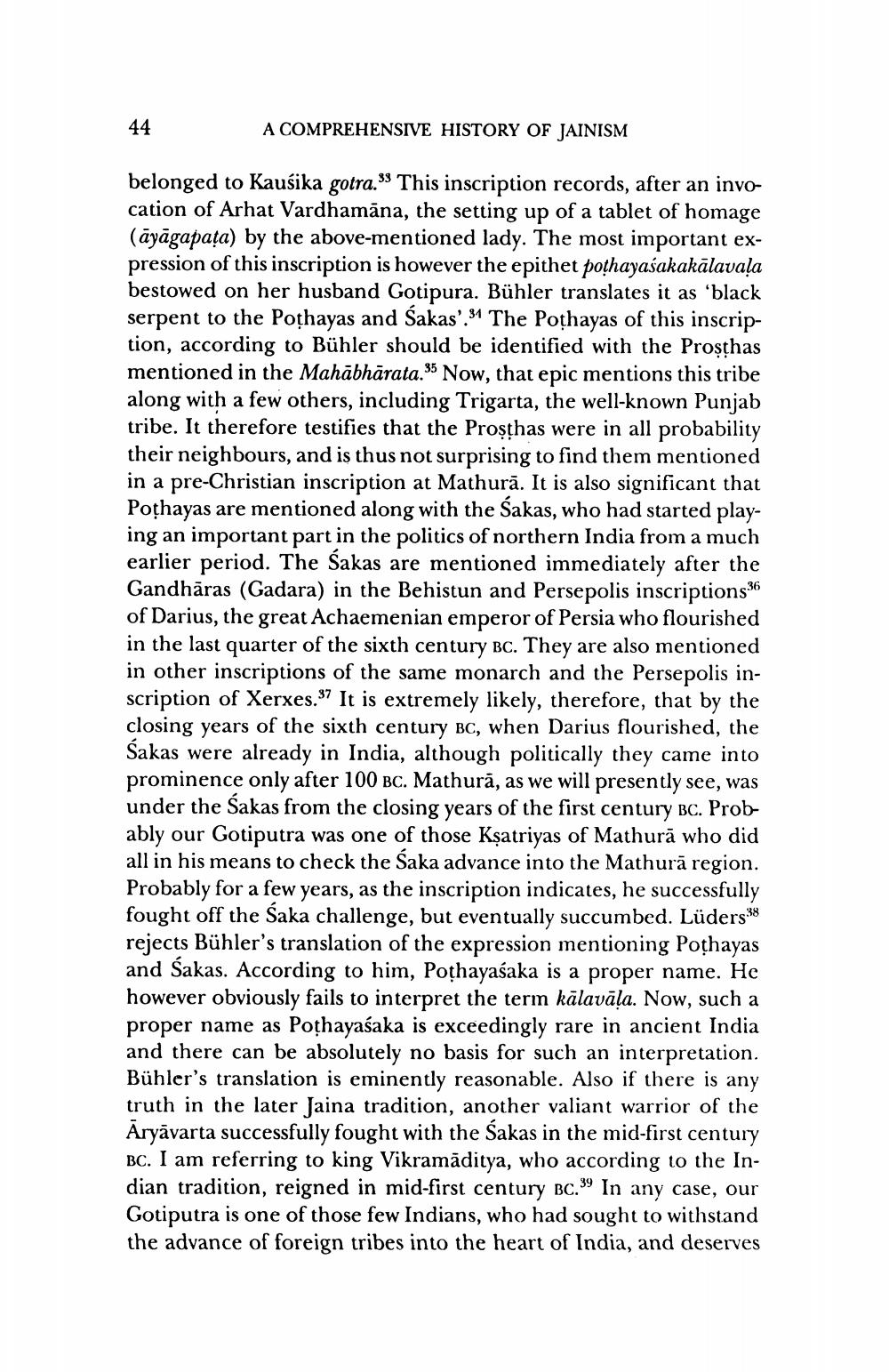________________
44
A COMPREHENSIVE HISTORY OF JAINISM
belonged to Kausika gotra." This inscription records, after an invocation of Arhat Vardhamana, the setting up of a tablet of homage (āyāgapata) by the above-mentioned lady. The most important expression of this inscription is however the epithet poțhayaśakakālavala bestowed on her husband Gotipura. Bühler translates it as 'black serpent to the Poțhayas and Sakas'. 31 The Poțhayas of this inscription, according to Bühler should be identified with the Prosthas mentioned in the Mahābhārata.35 Now, that epic mentions this tribe along with a few others, including Trigarta, the well-known Punjab tribe. It therefore testifies that the Proșthas were in all probability their neighbours, and is thus not surprising to find them mentioned in a pre-Christian inscription at Mathurā. It is also significant that Poțhayas are mentioned along with the Sakas, who had started playing an important part in the politics of northern India from a much earlier period. The Sakas are mentioned immediately after the Gandhāras (Gadara) in the Behistun and Persepolis inscriptions of Darius, the great Achaemenian emperor of Persia who flourished in the last quarter of the sixth century BC. They are also mentioned in other inscriptions of the same monarch and the Persepolis inscription of Xerxes.37 It is extremely likely, therefore, that by the closing years of the sixth century BC, when Darius flourished, the Sakas were already in India, although politically they came into prominence only after 100 BC. Mathurā, as we will presently see, was under the Sakas from the closing years of the first century Bc. Probably our Gotiputra was one of those Ksatriyas of Mathurā who did all in his means to check the Saka advance into the Mathurā region. Probably for a few years, as the inscription indicates, he successfully fought off the Saka challenge, but eventually succumbed. Lüders rejects Bühler's translation of the expression mentioning Pothayas and Sakas. According to him, Pothayaśaka is a proper name. He however obviously fails to interpret the term kālavāla. Now, such a proper name as Pothayaśaka is exceedingly rare in ancient India and there can be absolutely no basis for such an interpretation. Bühler's translation is eminently reasonable. Also if there is any truth in the later Jaina tradition, another valiant warrior of the Aryāvarta successfully fought with the Sakas in the mid-first century Bc. I am referring to king Vikramaditya, who according to the Indian tradition, reigned in mid-first century BC. In any case, our Gotiputra is one of those few Indians, who had sought to withstand the advance of foreign tribes into the heart of India, and deserves




